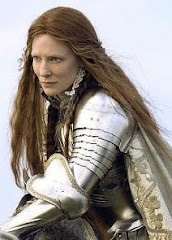 Name that thing:
Name that thing:a) Eyelash hairs; b) Human sperm; c) Knee of a Mexican red-kneed tarantula.
(Answers at bottom of post.)
My son and I were scouting the local toy/hobby shop recently. As a reward for passing his eleven plus, he could choose anything he wanted. I was pleased when he plumped for a telescope.
The telescope came with several detachable lenses, one of which could be used as a microscope. (It's like a small toilet roll tube with a transparent plastic ring at one end to allow light to illuminate the subject.)
We carry the microscope everywhere, and we've had no end of fun pulling it out to examine the fabric on a train seat*, or a dead ladybird, or a leaf. It's not particularly powerful, but more than adequate for transforming my shirt into an alien garden of vivid colours and feral vegetation.
*There was a bald man sat in the seat in front of us. So powerful was my son's sense of wonder that he momentarily forgot his social etiquette and leaned forward to place the microscope onto the man's hairless head. I just caught him. How we laughed.
I reckon I can say with some confidence that this sense of wonder - an attention to detail; a desire to explore and discover, and to share this fascination - is indispensable to the serious writer/designer/artist.
I've had some peculiar experiences lately.
A month or so back, I was in the garden and a plane flew by. It was the shape and size of your standard commercial passenger plane - but it had four wings, each with a jet engine.
Now that wasn't a peculiar experience. I watched it for a bit and thought Cool! and then carried on with whatever I was doing.
The peculiar bit came in stages over the following month as my memories began to dissolve and I began to question what I had seen. Why would my brain do that? What kind of instinct would become fearful of what I had actually seen and then begin to dismiss it or to re-describe it? What is it about the 'unusual' or the 'unexplained' that so fills us with dread, to the point where we deliberately distort the truth? Brains eh! Can't live with 'em, can't live without 'em!
 Name that thing:
Name that thing:a) Head of a Romanesco cauliflower; b) Butterfly eggs on a raspberry plant; c) Nerve endings.
I began to think back to my university days. On the whole, they were magical days! Barely a week would pass without some new, and potentially life-changing, discovery! Tutors would show me things that I had never noticed before - things that had been there all along and I simply hadn't picked them out. Lecturers would impart fresh, vital knowledge which would provide exciting new contexts for my evolving world.
I also remember that, whilst I was eager to experiment with all this cool new stuff, others around me seemed unmoved; they returned to their work with the same attitudes as before.
This is something I see a lot of and, if I wanted to fix this lens to my eyes, I could distinguish between the open-minded and receptive folks, and the others. Both attitudes are valid; but I'll suggest that the creative mind can only thrive when it is open and receptive.
I've been following Nicole Lazzaro's discoveries for a relatively short while. She has some great ideas! I won't go into her Four Keys to Fun observations here - nor will I begin to dissect the concept of fun - but we should consider her assertion that 'easy fun' is spearheaded by a sense of wonder. She calls this Chasing Wonder.
Awesome!
I'd go a step further and suggest that this is one of several fundamental techniques used for leading the reader through a story, or for plotting, or for drawing the viewer into a painting and then leading her through the narrative, or for suspending the listener within a piece of music.
I've had several debates with our producer about journals. I don't like them - at least, not in their currently accepted incarnations: I personally don't enjoy sifting through pages of text to find any given clue.
Her thinking is that journals are a good place to info dump, and that the player will, whilst chasing wonder, ingest the info - typically exposition - on her way to finding any given clue. Like a doctor holding a lollipop in one hand and a hypodermic needle in the other.
So for those who have found this post wearisome, here's your lollipop. :o)
Name that thing answers:
1) a - eyelash hairs.
2) c - nerve endings.
3) b - integrated circuit.
Check 'em out here, here, and here.







